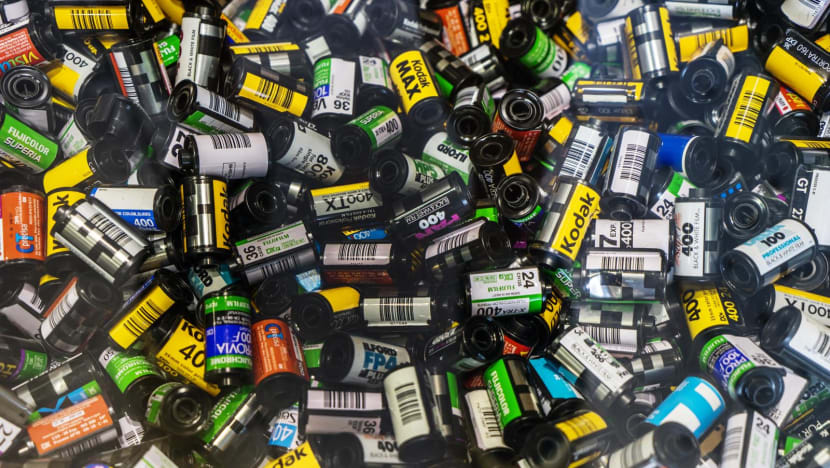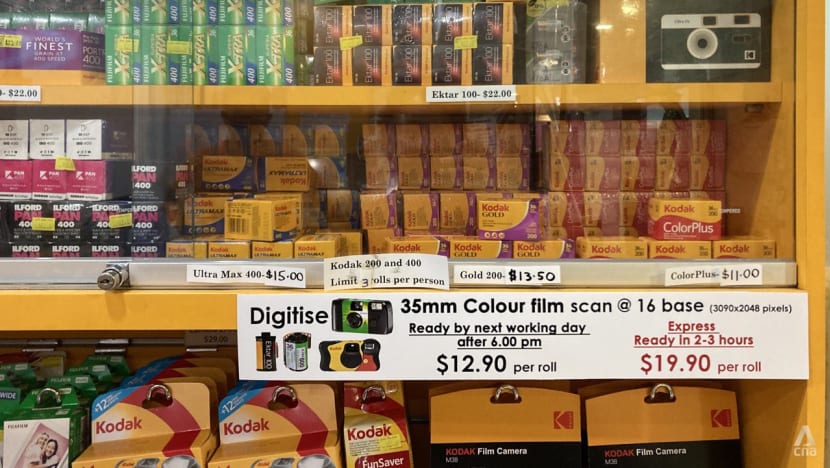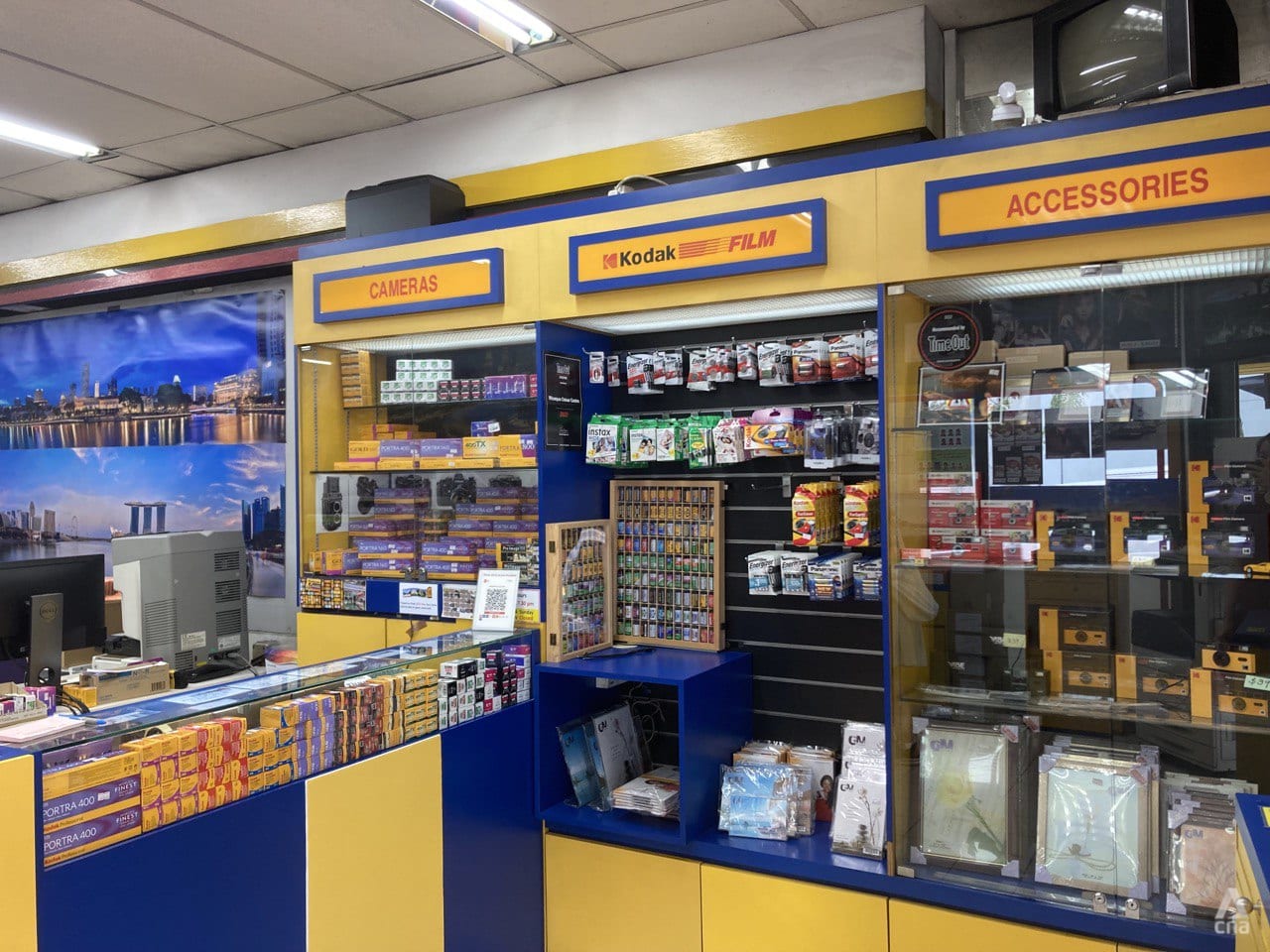Why photography enthusiasts in Singapore are willing to pay S$20 for a roll of film
Shop owners say customers are in their 30s or younger, and that interest in film spiked around four years ago.

File photo of film rolls. (Photo: iStock)
SINGAPORE: As a teenager, Ms Trisha Lim gave up on film photography because the hobby was too expensive on her student’s budget.
In 2021, a few years into her career in communications, she thought it might be the right time to get back into the hobby, costly as it was.
But with the price of film steadily climbing, Ms Lim, now 28 years old, is unsure if she will continue pursuing film photography.
“I’m quite on the fence. When I finally use (my stash) up, I guess I’ll see how much film costs at that point,” she said. Ms Lim has around 15 rolls of film that she bought overseas or on online platforms such as Shopee and Carousell.
“I’m kind of hoarding what I have left, and I don’t know if I’ll even continue cause it’s really expensive."
Yet, at the same time, she recognises that it would be a waste if she stops shooting film, since she has already invested in film cameras.
Digital cameras and mobile phone applications which try to mimic film photography are still missing something, said Ms Lim.
“If the digital solutions can replicate it perfectly, it’s a no-brainer, immediate jump (over to digital)."
FILM IS "VERY REAL, VERY RELATABLE”
As recently as before the COVID-19 pandemic hit in 2020, a roll of film could cost less than S$4 (US$2.96), shop owners told CNA.
One of the cheaper films on the market, the Kodak ColorPlus 200 35mm, now costs between S$11 to S$18, checks by CNA found.
Ms Lim paid around S$12 for a roll of Fujifilm 200 35mm on Shopee last year. Listings today are asking for around S$20.
“Prices keep rising,” said Mr Ong Tee Huat of Whampoa Colour Centre shop in Balestier. “This year, there have been two or three hikes by suppliers already.”
Shop owners said prices increased after a revival in demand three or four years ago, and that most of their customers now are aged between their late teens and 30s.
“Young people are tired of playing with their phones. Since the pandemic, a lot of them have been exploring film,” Mr Ong said in Mandarin.
Mr Ken Ng, co-owner of Joo Ann Foh Colour Service, said the vibrance of digital colours on mobile phones is too much for some of his customers.
“They find film colour very real to them, very relatable,” he said.
Young adults who spoke to CNA also said film photography makes them more intentional about the pictures they take.
“Shooting film makes me think about what I'm doing, and it makes me think more about exactly what kind of image I’m trying to capture,” said Mr Nikolas Lim, 25, who works in the finance industry.
“Also, because it's expensive, each shot you take can be nearly S$1, you have to be very precise,” he said, comparing it to digital photography where people take many pictures that they may never look at again.
SUPPLY CONSTRAINTS
Major companies such as Kodak and Fujifilm may be struggling to meet demand.
“Demand has outstripped supply and manufacturing capacity just cannot meet (this demand),” said Mr Ng.
When factories were shut as digital cameras became popular, many machines were sold or scrapped, he explained.
Even if spare parts are available now, it might make more sense to keep them on hand for repairs rather than using them to make a new machine, he said.
Shop owners also said Tokyo-based Fujifilm appears to be focusing on its other products in optics, electronics, biotechnology and chemicals.
“Fujifilm is making fewer and fewer rolls; there’s not much competition for Kodak,” said Mr Ong of Whampoa Colour Centre.
In response to CNA's queries, Fujifilm said it will continue to produce photo film to satisfy the needs of enthusiasts, and that is has "made every effort to increase production efficiency" and stabilise the supply of film.
"We are aware that customers face some difficulties purchasing our films in Singapore and we will continue our efforts to meet their needs," the company said. It attributed the price increases to a sharp increase in the cost of raw materials for film production.
Photography websites have also reported on Kodak raising prices earlier this year. CNA has reached out to the American firm for comment.

Some shop owners said they deal with their supply issues by buying from multiple distributors, and ordering larger amounts than other stores.
Mr Ng from Joo Ann Foh, however, said he sometimes goes one to two months without receiving any orders placed for film rolls.
Late last year, the shop started limiting customers to five rolls for certain types of film, to ensure enough stock for regular customers. They later tightened the limit further to three rolls.
Mr Ng said some of his customers have started asking about digital point-and-shoot cameras, as an alternative to shooting on film.
FOR THE LOVE OF FILM
Still, some hobbyists have no plans to stop shooting analogue, though they may cut back in different ways.
Ms Vanessa Tan, 24, said she no longer takes photos of sights in Singapore, in part because of the rising costs.
“I don’t mind taking (film photos of) my friends, I’ll still shoot, I think it’s a nice memory,” she said. She added that she has quite a few rolls of film left, so the higher prices have not affected her as much.

Mr Nikolas Lim said he's now a bit more careful deciding what to shoot, and keeps an eye out for good deals.
“When I first started off, I bought all the expensive film to try, but now ... I can’t really experiment as much,” he said.
The price of developing film rolls has gone up as well, though not as dramatically as the cost of the film itself, he added.
At the end of the day, people will spend money on their interests, said Mr Ronnie Ong, owner of Quick Photo Distributor in Tanjong Pagar.
“Those who like fine dining pay up for it ... (There are those who) would even pay more than S$1 million for a Lamborghini,” he said.
“Those who like photography will be willing to spend.”














